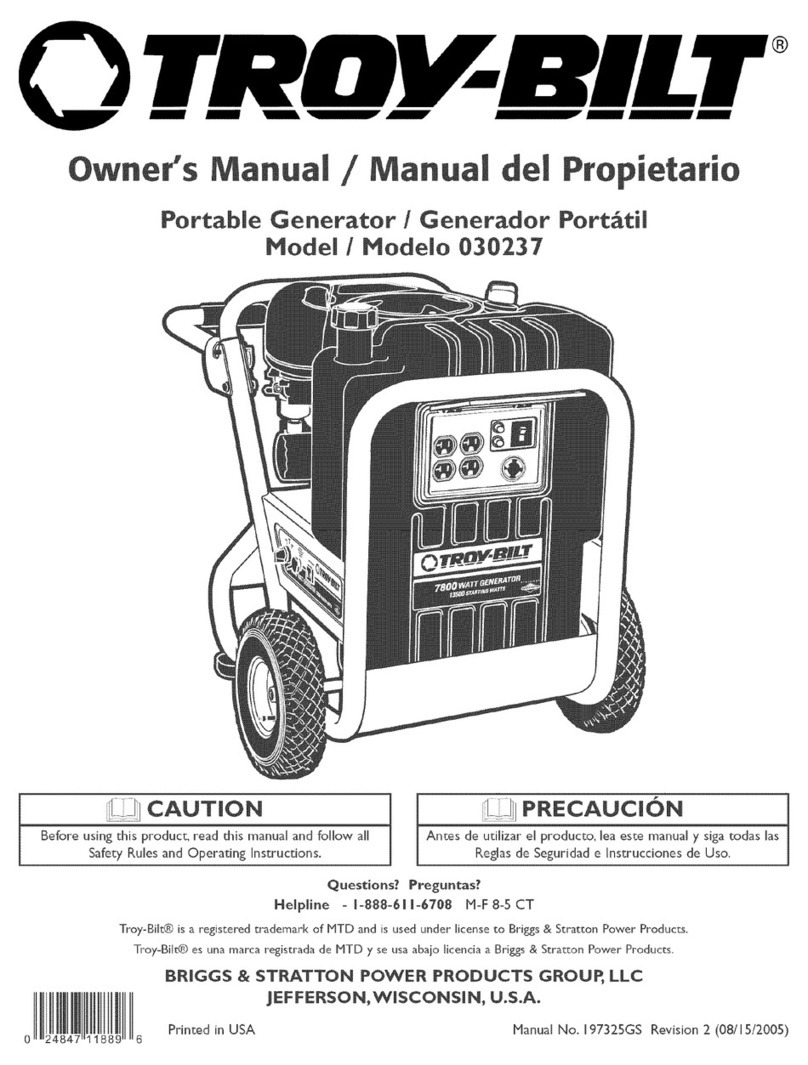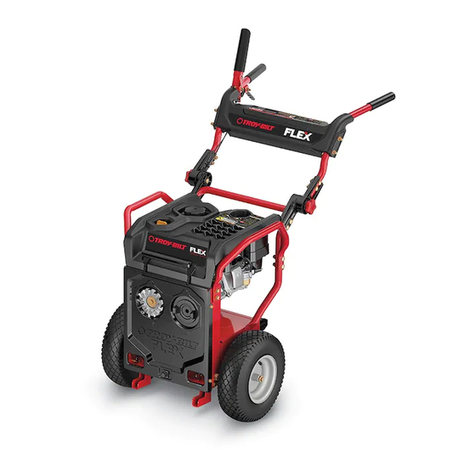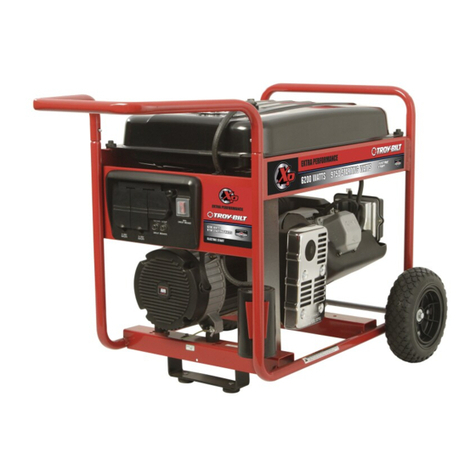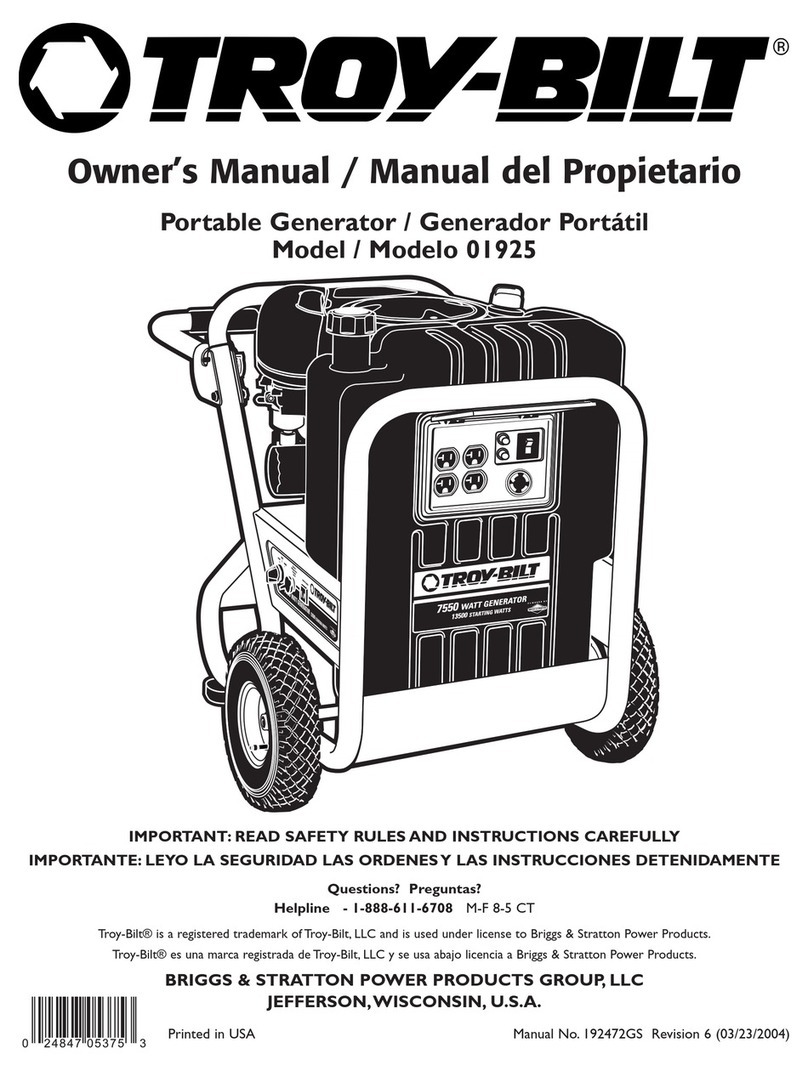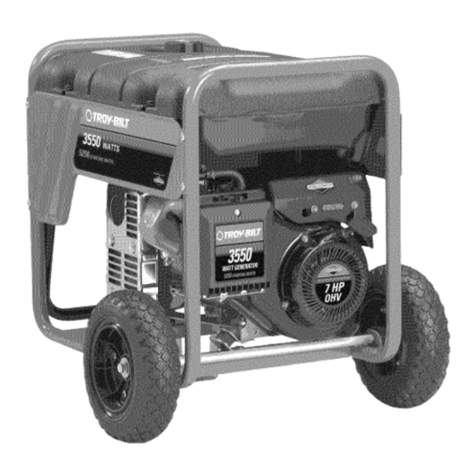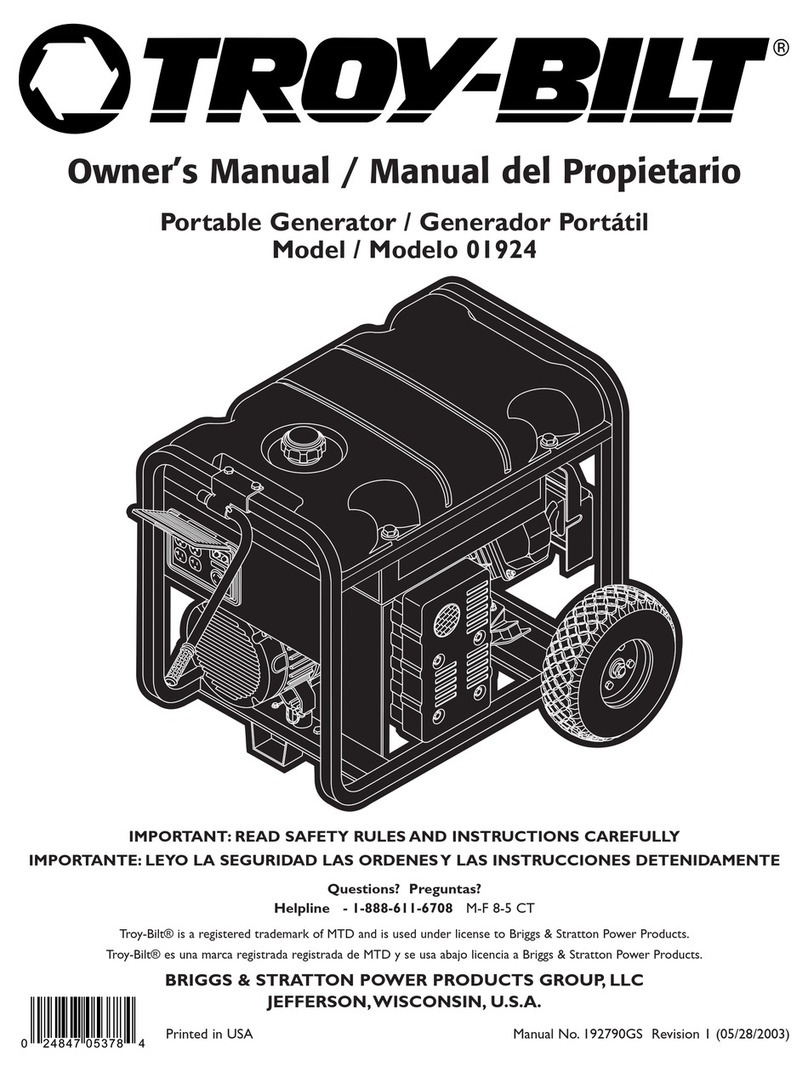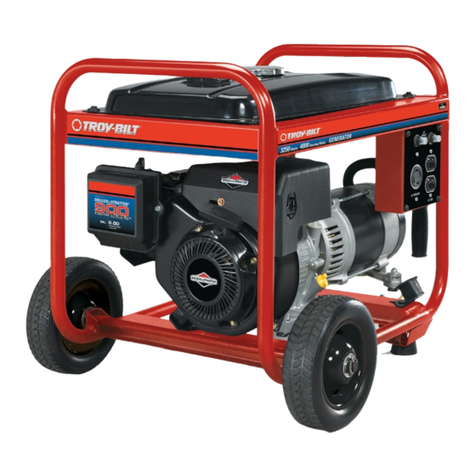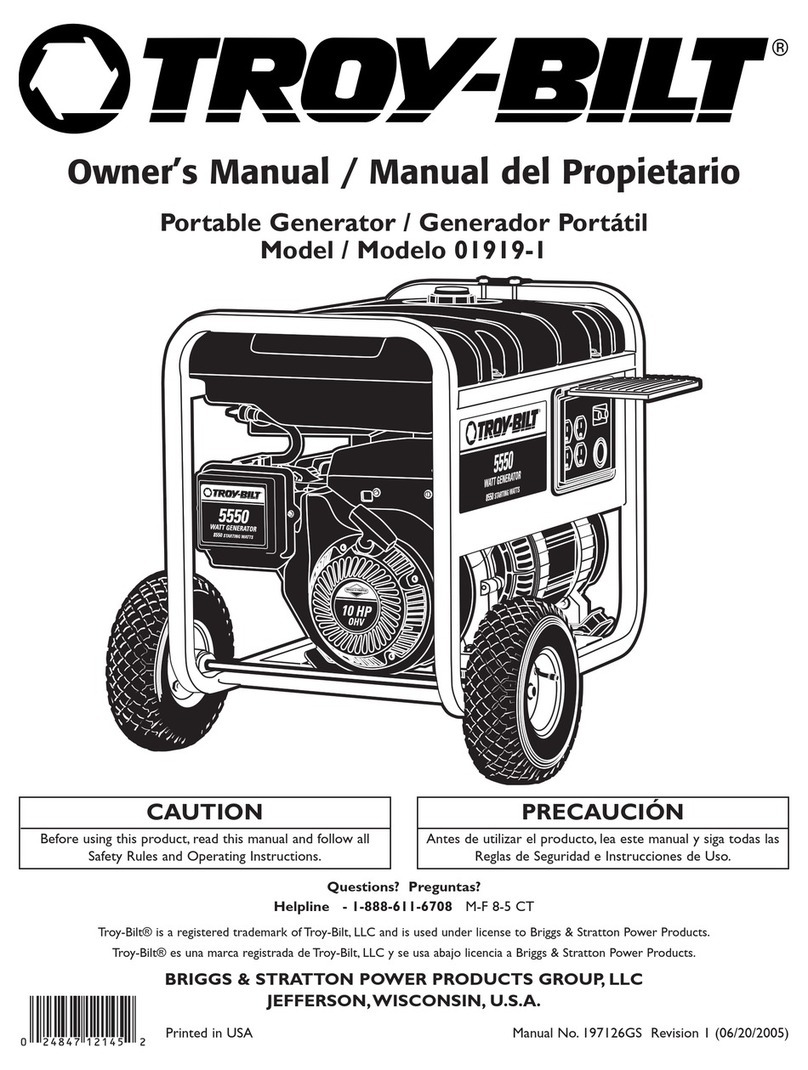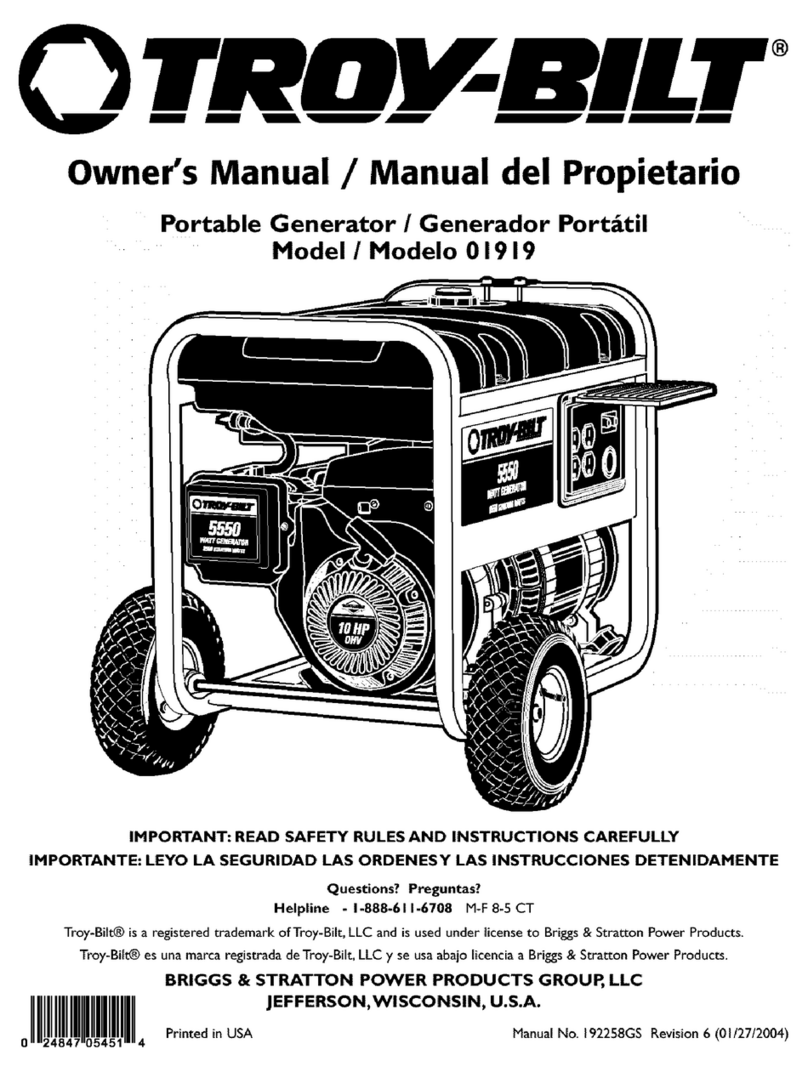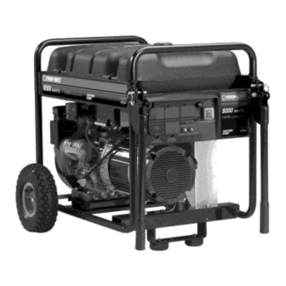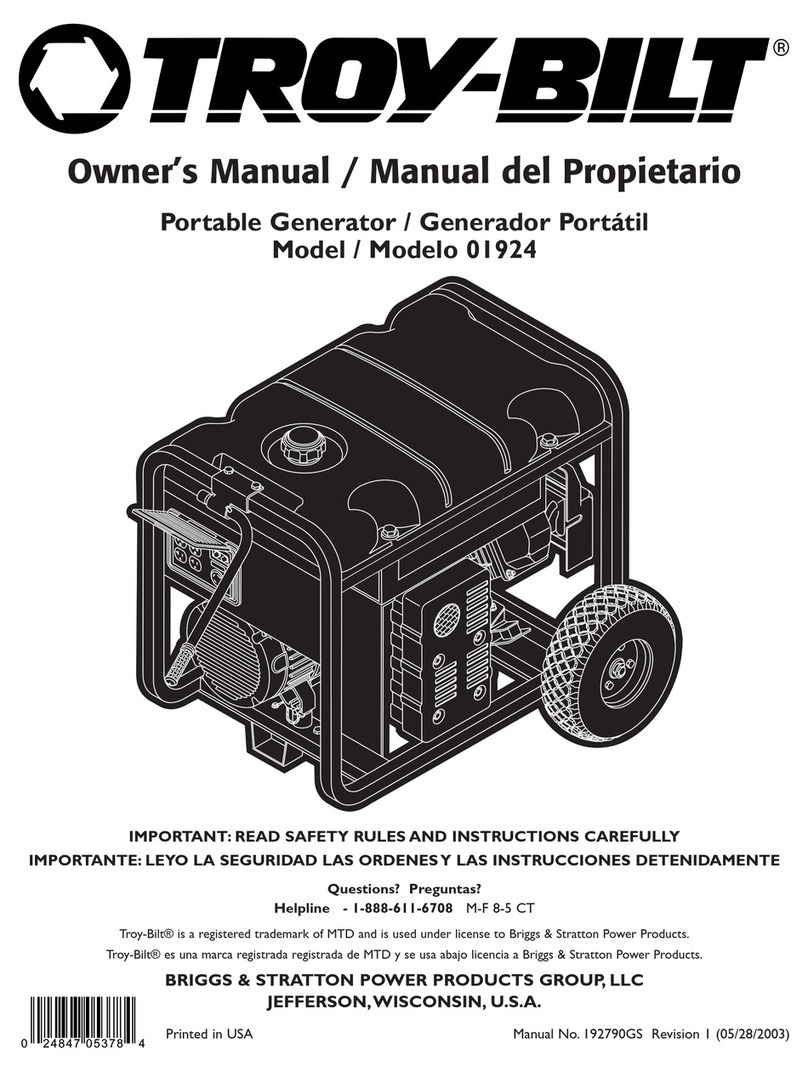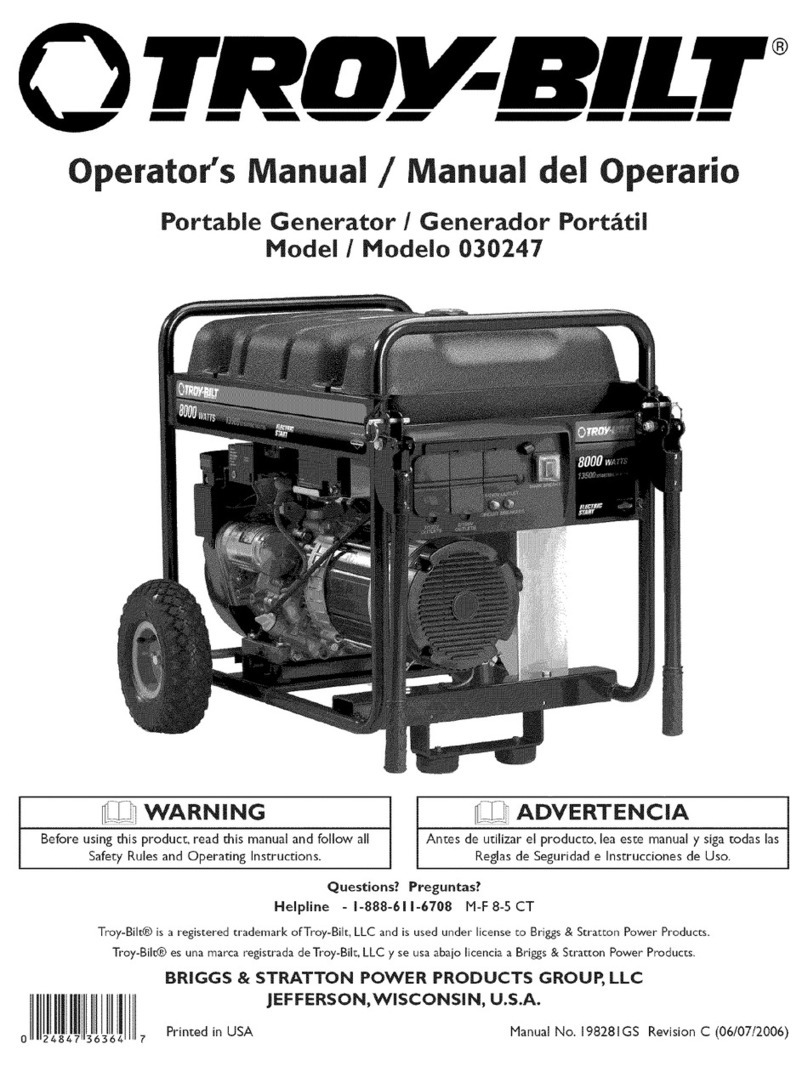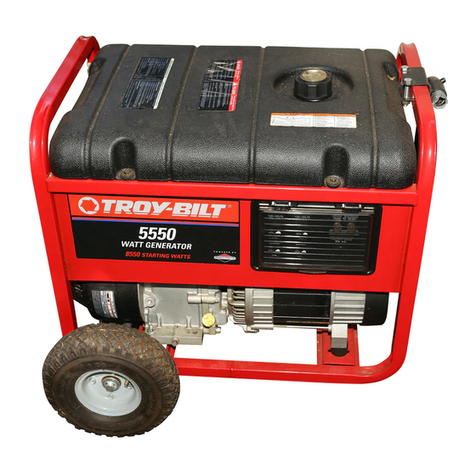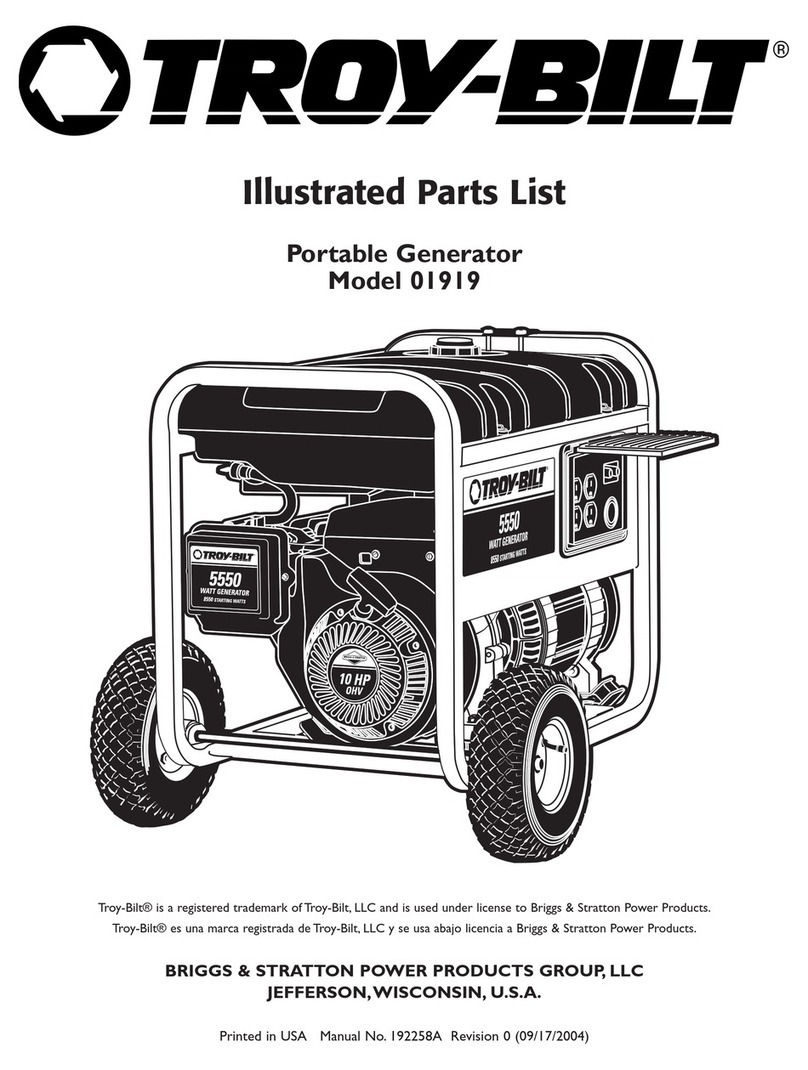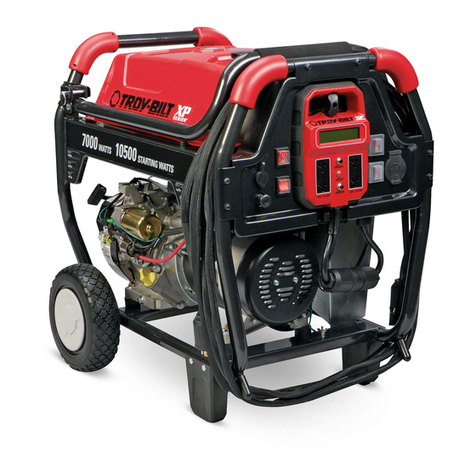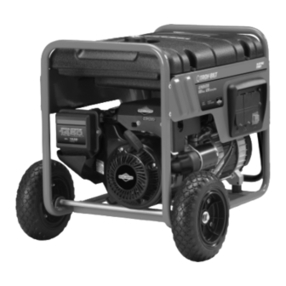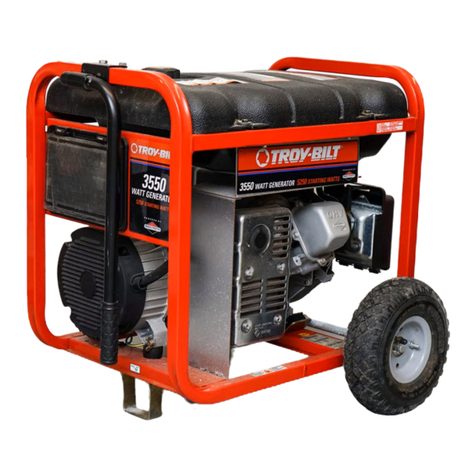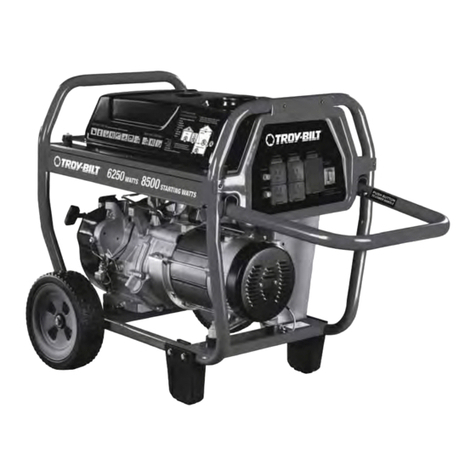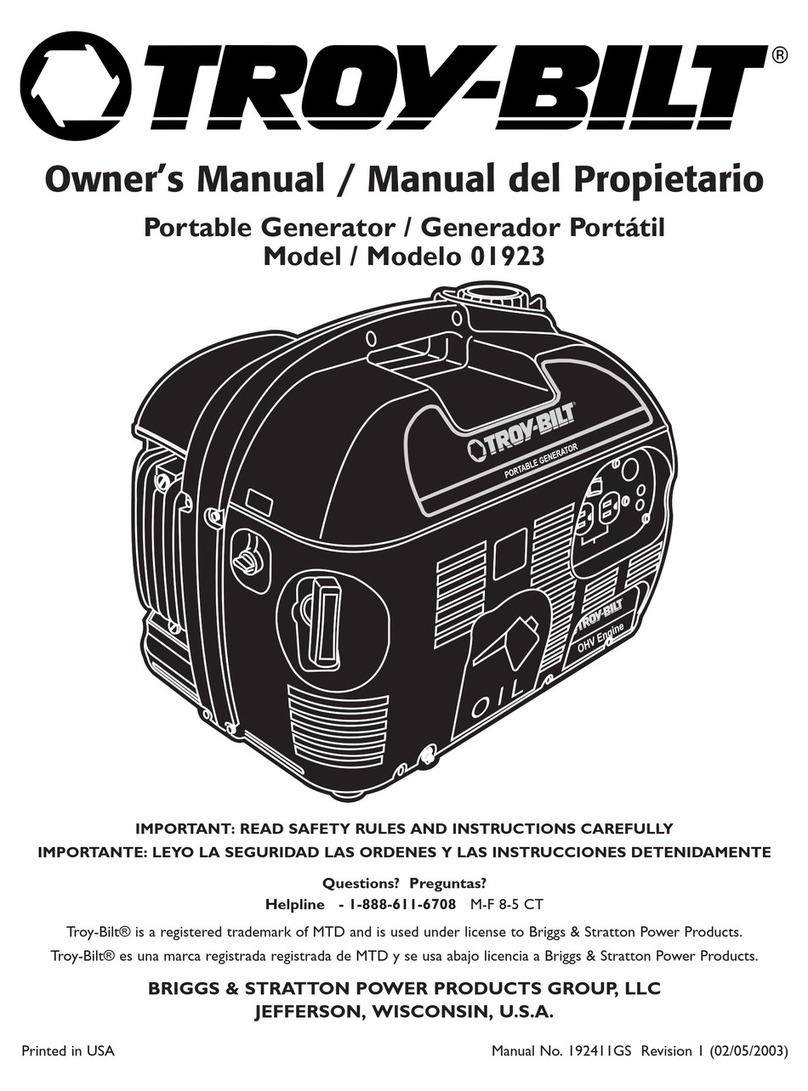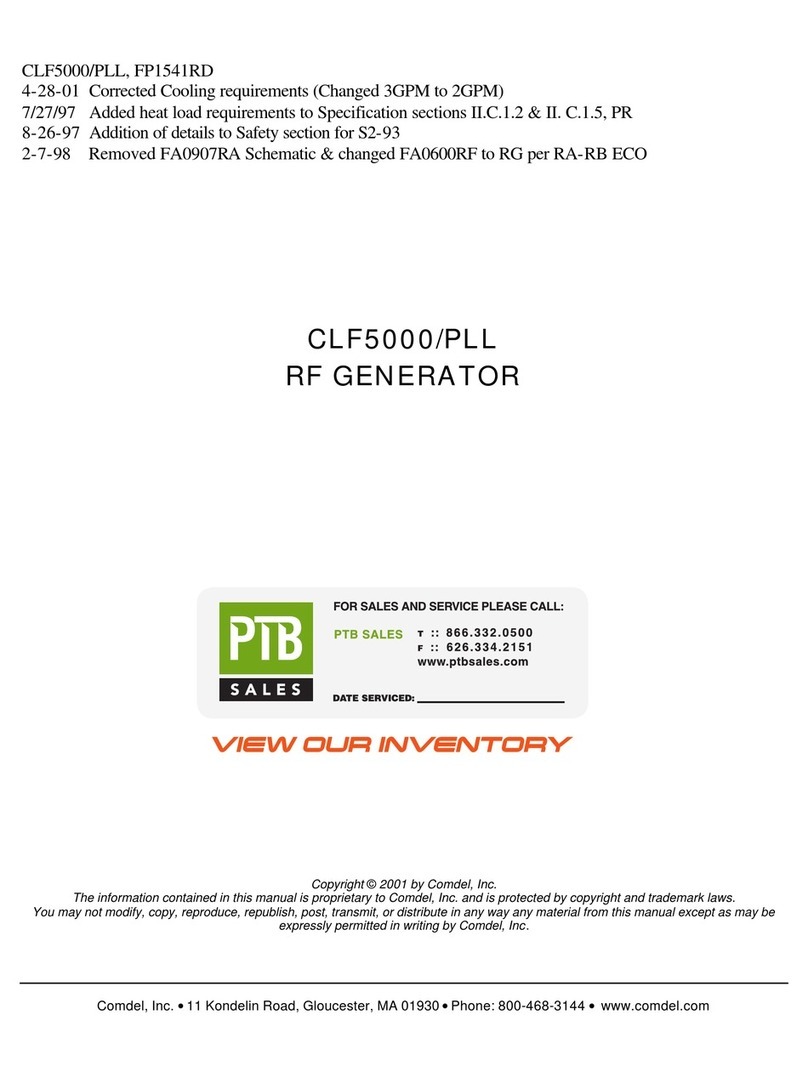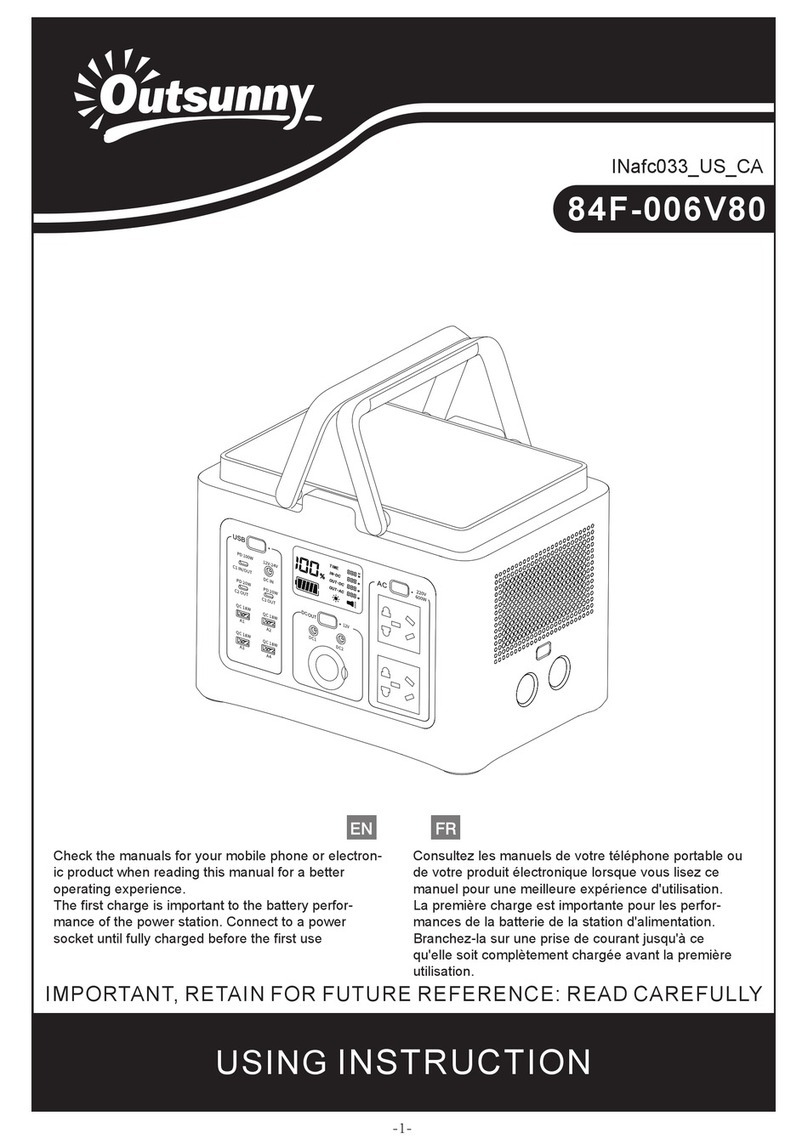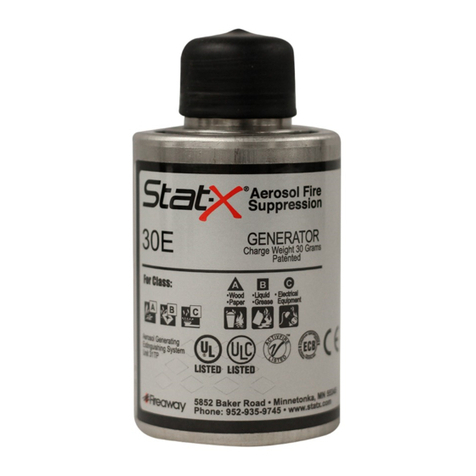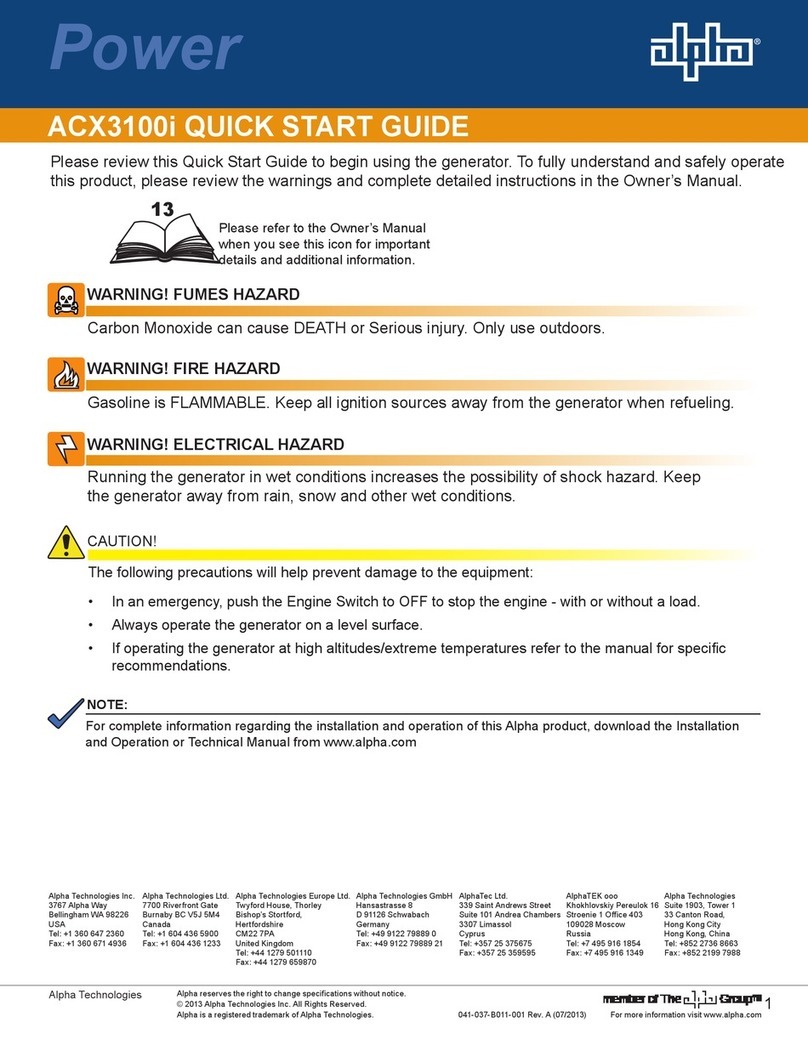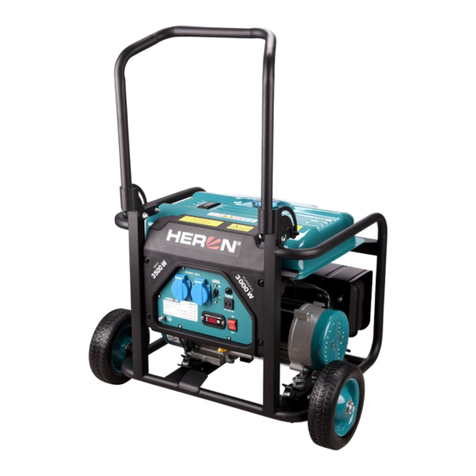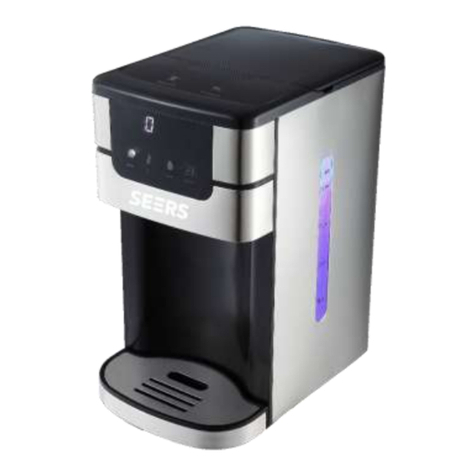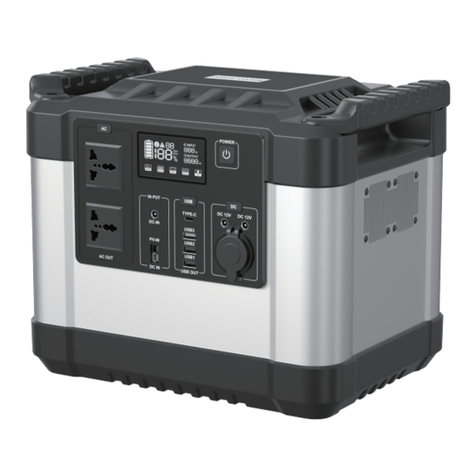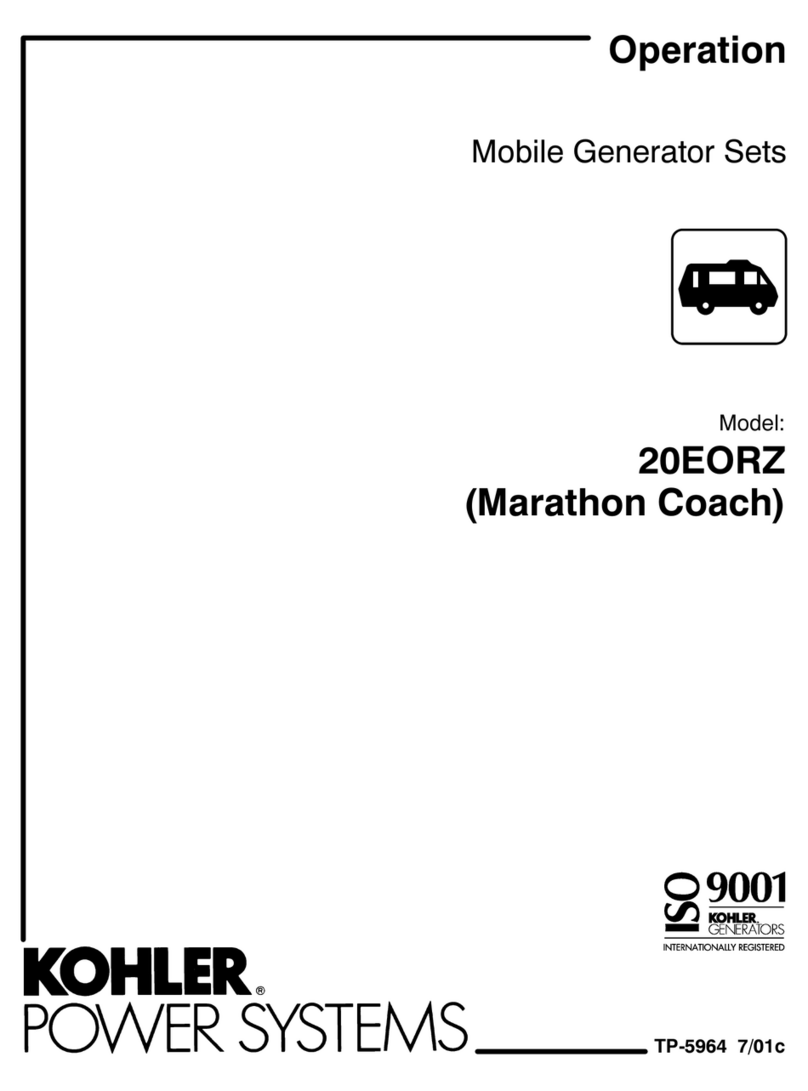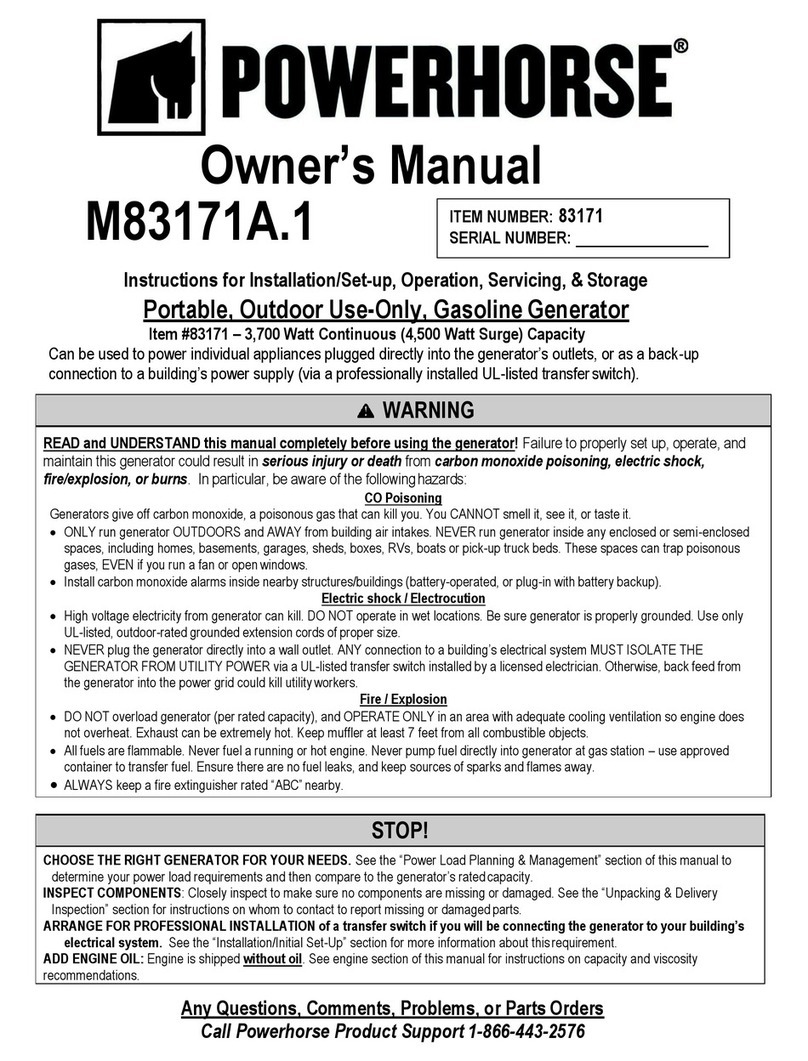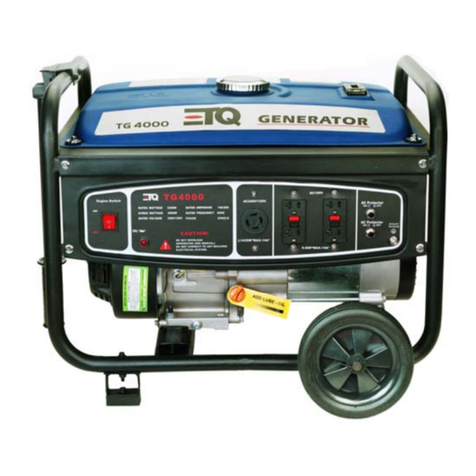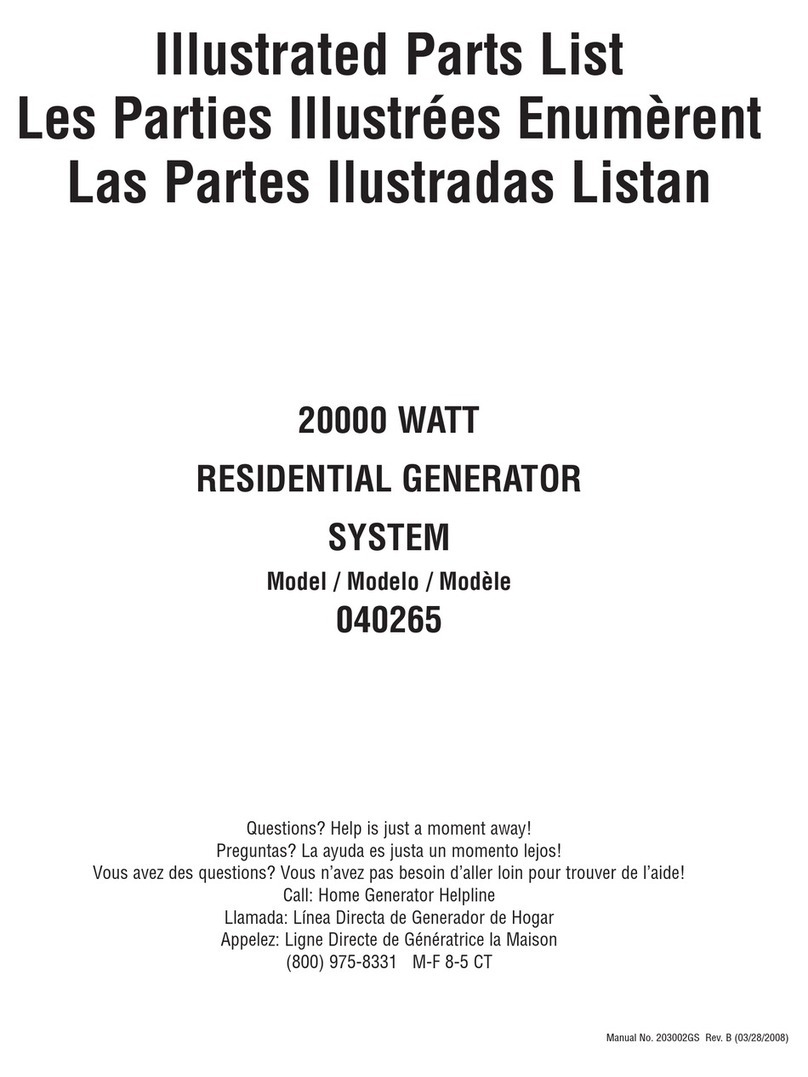
Section 4: Operation
4. Connect the other RED jumper cabHechamp to the
starting battery's POSITIVE battery terminal
5. Connect the BLACK jumper came champ to the
starting battery's NEGATIVE battery terminal
6. Connect the other BLACK jumper cable clamp to the
GROUNDING FASTENER on the generator, as shown
in Figure 7.
7. Start the generator as described in "Starting the
Engine" and remove jumper cables in reverse order of
connections.
8. Slide the red rubber boot back onto the generator's
POSITIVE battery terminal.
If you have any questions, please call the Generator
Heipiine at l=888=61 l=6708, M=F 8=5 CT.
INPORTANT:When jump starting, always wear proper eye
protection and never lean over battery. Inspect both
batteries before connecting booster cables. DO NOT jump
start a damaged battery. Be sure vent caps are tight and level.
Connecting E]ectricaU Loads
"Let engine stabilize and warm up for a few minutes after
starting.
° Plug in and turn on the desired 120 and/or 240VoltAC,
single phase, 60 Hz electrical loads.
° DO NOT connect 240Volt loads to the 120Volt duplex
receptacles.
° DO NOT connect 3-phase loads to the generator.
.DO NOT connect 50 Hz loads to the generator.
* DO NOT OVERLOAD GENERATOR. See "Don't
Overload Generator".
Sto the Engine
I. Turn OFF and unplug all electrical loads from
generator panel receptacles. NEVER start or stop engine
with electrical devices ph_ed in and turned ON.
2. Let engine run at no-load for several minutes to
stabilize internal temperatures of engine and generator.
3. Turn start switch to "Stop" position.
Charging a Battery
Your generator has the capability of recharging a discharged
12Volt automotive or utility style storage battery, DO
NOT use the unit to charge any 6Volt batteries. DO NOT
use the unit to crank an engine having a discharged battery,
DANGER
DO NOT allow any open flame, spark, heat, or lit cigarette
during and for several minutes after charging a batter_;
Wear protective goggles, rubber apron, and rubber gloves.
To recharge 12Volt batteries, proceed as follows:
I. Check fluid level in all battery cells. If necessary, add
ONLY distilled water to cover separators in battery
cells. DO NOT use tap water.
2. If battery is equipped with vent caps, make sure they
are installed and are tight.
3. If necessary, clean battery terminals.
4. Connect battery charge cable connector plug to panel
receptacle identified by the words "12-VOLTS D.C.".
5. Connect battery charge cable clamp with red handle
to the positive (+) battery terminal (Figure 8).
12 VOLT B.C.
RECEPTACLE
+
POS NEG
12 VOLT BATTERY
6. Connect batterychargecableclamp with black handle
to the negative (-) battery terminal (Figure 8).
7. Start engine. Let engine run while battery recharges.
8. VVhen battery has charged_ shut down engine
NOTE: Use an automotive hydrometer to test battery state
of charge and condition. Follow the hydrometer
manufacturer's instructions carefully. Generally, a battery is
considered to be at 100%state of charge when specific gravity
of its fluid (as measured by hydrometer) is 1.260 or higher.

